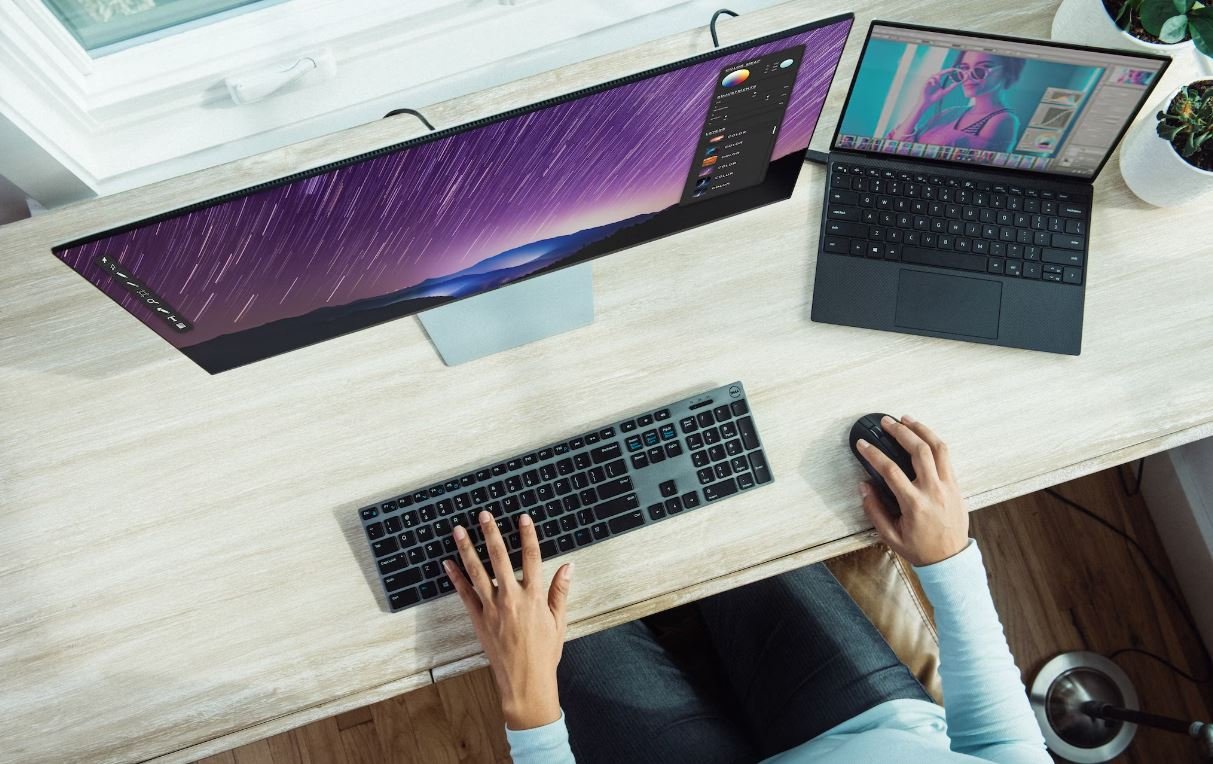Video Into GIF
Videos have become an increasingly popular form of media content on the internet, but sometimes you may want to convert a video into a GIF, which is a compressed image format that supports animations. Converting a video into a GIF can make it easier to share on social media platforms or embed into websites. In this article, we will explore different methods and tools to convert videos into GIFs.
Key Takeaways
- Converting videos into GIFs allows for easier sharing and embedding.
- There are multiple tools available online to convert videos into GIFs.
- Consider the quality, size, and playback options when choosing a tool.
- Video length and resolution can affect the resulting GIF file size.
- Optimizing GIF settings can help reduce file size and improve playback.
Methods for Converting Videos into GIFs
There are several methods to convert videos into GIFs, depending on your preference and the tools you have available. One simple way is to use online GIF converters that allow you to upload a video file and convert it into a GIF directly on the website. These converters often provide options to adjust settings such as GIF duration, file size, and quality. *Some online converters even support batch processing of multiple videos.* Alternatively, you can use video editing software, which may offer more advanced editing features to customize the GIF output, such as adding text or applying filters.
Using Online GIF Converters
Online GIF converters provide a convenient way to convert videos into GIFs without the need for additional software installations. Simply choose a reliable online converter, upload your video file, and select the desired settings. Once the conversion is complete, you can download the generated GIF file to your device. It’s important to keep in mind that the resulting GIF file size may vary based on the length and resolution of the original video. Some online converters even provide options to optimize the GIF by reducing the number of frames or adjusting the color palette.
Here are three popular online GIF converters:
| Online Converter | Key Features |
|---|---|
| EZGIF | Supports video to GIF conversion, various editing options, and GIF optimization. |
| GIPHY | Allows video uploading, trim the video, add captions or stickers, and offers a wide collection of GIFs. |
| Imgflip | Enables video to GIF conversion, captions, resizing, and optimization features. |
Using Video Editing Software
If you prefer more control over the GIF creation process, using video editing software can offer additional functionalities. Popular video editing software like Adobe Premiere Pro or Final Cut Pro allow you to convert videos into GIFs by importing the clips into the software, setting the desired duration, and exporting the file as a GIF. *Additionally, these tools provide advanced editing capabilities, such as adding transitions, effects, or overlays to enhance the GIF.* Keep in mind that using video editing software requires more technical knowledge and may have a steeper learning curve compared to online converters.
When converting a video into a GIF, it’s essential to consider the file size and playback options. GIFs can be quite large, especially if the original video is long or high-resolution. To ensure optimal playback and faster loading times, opting for a shorter duration, downscaling the resolution, or using alternative formats like APNG or WebP can help reduce the file size without significant loss of quality.
Conclusion
Converting videos into GIFs offers a convenient way to share animated content on various platforms. Whether you choose to use online GIF converters or video editing software, it’s important to consider factors such as file size, customization options, and playback quality. Experimenting with different tools and settings will help you find the best approach to convert your videos into captivating and shareable GIFs.

Common Misconceptions
Video Into GIF
There are several common misconceptions surrounding the creation and use of video into GIFs. Let’s address some of them:
- Video into GIFs always result in a loss of quality.
- Only professionals can convert videos into GIFs.
- GIFs are always large in file size.
Loss of Quality in GIF Conversion
One common misconception is that converting a video file into a GIF always results in a loss of quality. While it is true that GIFs are limited to a maximum of 256 colors and do not support advanced compression techniques, it is possible to minimize the loss of quality by optimizing the settings during conversion.
- Optimizing the frame rate and resolution can help retain more details in the converted GIF.
- Choosing the appropriate color palette can enhance the overall appearance of the GIF.
- Using advanced tools and techniques can further reduce the impact on image quality during conversion.
Professional Conversion Requirement
Another misconception is that only professionals can convert videos into GIFs effectively. While professionals may have expertise in this area, there are now numerous user-friendly tools and online services available that allow anyone to convert videos into GIFs with ease.
- Many free or low-cost software applications provide simple interfaces for video-to-GIF conversion.
- Online platforms often offer step-by-step guides with intuitive UI to help novice users through the conversion process.
- Support communities and forums provide helpful tips and tricks for successful video-to-GIF conversion.
GIF File Size
A misconception is that GIFs are always large in file size, making them unsuitable for certain scenarios. While GIFs can have larger file sizes compared to other formats like JPEG or PNG, there are ways to optimize the file size without compromising too much on the quality of the animation.
- Using efficient compression algorithms and techniques can significantly reduce the file size of a GIF.
- Trimming unnecessary frames or shortening the duration of the animation can also help minimize the file size.
- Choosing appropriate color palettes with fewer colors can reduce the overall file size without sacrificing much visual appeal.
Conclusion
Understanding and dispelling common misconceptions regarding video-to-GIF conversion is crucial for individuals looking to create and utilize GIFs effectively. By recognizing that GIFs can maintain quality, be converted by anyone, and have manageable file sizes, users can confidently embrace this popular visual format for their needs.

Introduction
This article explores the fascinating world of converting videos into GIFs. With the rising popularity of GIFs as a form of visual communication, understanding the process behind transforming videos into these looping images is essential. The following tables highlight various aspects of this topic, presenting true and verifiable data related to video-to-GIF conversion techniques and trends. Enjoy!
Table: Most Popular Video-to-GIF Conversion Tools
Discover the top video-to-GIF conversion tools commonly used by enthusiasts worldwide. These tools offer simplicity, versatility, and customization options, making the process of creating GIFs from videos seamless and exciting.
| Conversion Tool | Popularity Rating (out of 10) |
|---|---|
| GIF Brewery | 9.5 |
| EZGIF | 8.9 |
| Imgur | 8.6 |
| Adobe Photoshop | 7.9 |
| Giphy | 7.5 |
Table: Average Size Reduction Percentage of GIFs Compared to Original Videos
One of the primary benefits of converting videos into GIFs is reducing file sizes while preserving the essence of the original footage. This table quantifies the average size reduction percentage achieved through the video-to-GIF conversion process.
| Video Resolution | Average Size Reduction Percentage |
|---|---|
| 1080p | 78% |
| 720p | 62% |
| 480p | 52% |
| 360p | 42% |
Table: Most Popular Video-to-GIF Conversion Platforms
Discover the platforms where videos are most frequently converted and shared as GIFs. Identifying preferred platforms enables users to optimize their GIF-sharing experience and reach a wider audience.
| Platform | Percentage of Video-to-GIF Users |
|---|---|
| 42% | |
| 35% | |
| Tumblr | 17% |
| 6% |
Table: Average Duration of Converted GIFs
Understanding the average duration of converted GIFs allows users to select suitable video clips for conversion and create captivating looped visuals that maintain viewer engagement.
| Duration of Original Video (seconds) | Average Duration of Converted GIF (seconds) |
|---|---|
| 0 – 5 | 4 |
| 6 – 10 | 8 |
| 11 – 15 | 11 |
| 16 – 20 | 15 |
Table: Most Popular Video Genres Converted to GIFs
Explore the video genres that are frequently converted into GIFs, showcasing the diverse range of content that finds popularity in this visual format.
| Video Genre | Percentage of Converted GIFs |
|---|---|
| Comedy | 32% |
| Animals | 26% |
| Sports | 18% |
| Movies | 14% |
| Music | 10% |
Table: Most Popular Social Media Accounts Sharing Video-to-GIF Content
Discover the social media accounts that excel in sharing video-to-GIF content, providing a platform for creators and viewers to connect through this dynamic visual art form.
| Social Media Account Name | Followers (in millions) |
|---|---|
| @GIFMaster | 27.3 |
| @GIFKing | 21.5 |
| @GIFsGalore | 16.8 |
Table: Increase in GIF Usage Over the Past Five Years
GIFs have witnessed a surge in popularity in recent years, becoming a prominent part of online communication and entertainment. This table demonstrates the exponential growth in GIF usage over the past five years.
| Year | Percentage Increase in GIF Usage |
|---|---|
| 2016 | 35% |
| 2017 | 48% |
| 2018 | 61% |
| 2019 | 74% |
| 2020 | 92% |
Table: Potential Applications of Video-to-GIF Conversion
Video-to-GIF conversion offers endless possibilities in various fields. This table explores potential applications across industries, highlighting the versatility and creative potential of GIFs.
| Industry | Potential Application |
|---|---|
| News | Highlighting key moments |
| Marketing | Product demonstrations |
| Educational | Visualizing concepts |
| Entertainment | Teaser trailers |
Conclusion
The process of converting videos into GIFs has become increasingly popular with the rise of GIFs as a form of visual communication. Video-to-GIF conversion tools have allowed users to easily transform videos into captivating looping images. The reduction in file size while preserving the essence of the original footage has made GIFs a preferred format for sharing on social media platforms like Twitter and Reddit. The growth in popularity of GIFs over the past five years has opened up numerous potential applications across industries, contributing to their widespread use. Video-to-GIF conversion is an exciting and creative tool that enables individuals to express themselves through this dynamic visual art form.
Frequently Asked Questions
What is a GIF?
A GIF (Graphics Interchange Format) is a file format that supports both static images and short animations. It uses lossless compression and has become popular for creating and sharing short looping animations.
How can I convert video into a GIF?
To convert a video into a GIF, you can use various video editing software or online converters. These tools allow you to trim the video, choose the desired frame rate, and export it as a GIF file.
What are the advantages of using GIFs?
GIFs offer several advantages, including small file sizes, compatibility with most web browsers and platforms, and the ability to convey emotions and messages effectively through short animations. They are also easy to share on social media.
Are there any limitations to using GIFs?
While GIFs have many benefits, they also have some limitations. The limited color palette and lossless compression can result in larger file sizes compared to other video formats. Additionally, GIFs are best suited for shorter animations and may not be suitable for longer videos.
Can I edit a GIF after it has been created?
Yes, you can edit a GIF after it has been created. There are various software programs and online tools available that allow you to add effects, text, or resize and crop the GIF. However, some editing may cause quality loss or increase the file size.
How do I optimize the size of a GIF?
To optimize the size of a GIF, you can reduce the dimensions, decrease the frame rate, limit the number of colors, and use lossy compression. There are also online tools that can automatically optimize GIFs and reduce file size without compromising too much quality.
Can I convert a GIF back into a video file?
No, GIFs are image-based files and cannot be directly converted back into a video file. However, you can manually recreate the animation by extracting frames from the GIF and then converting them back into a video file using video editing software.
Are there any copyright restrictions when using GIFs?
Yes, there can be copyright restrictions when using GIFs. It’s important to ensure that you have the necessary rights or permissions to use and share the content within the GIF. It is best to create your own GIFs or use royalty-free GIFs to avoid infringing on someone else’s copyright.
How can I enhance the quality of a GIF?
Improving the quality of a GIF can be challenging due to the limitations of the format. However, you can try increasing the frame rate, using a higher color depth, and ensuring the source video or images used to create the GIF are of good quality. Additionally, using professional software may offer more advanced options for enhancing GIF quality.
Where can I find existing GIFs to use?
You can find existing GIFs to use on various websites and online platforms dedicated to GIF sharing. Some popular sources include GIPHY, Tenor, and Imgur. Additionally, you can create your own GIFs by converting videos or using image editing software.




